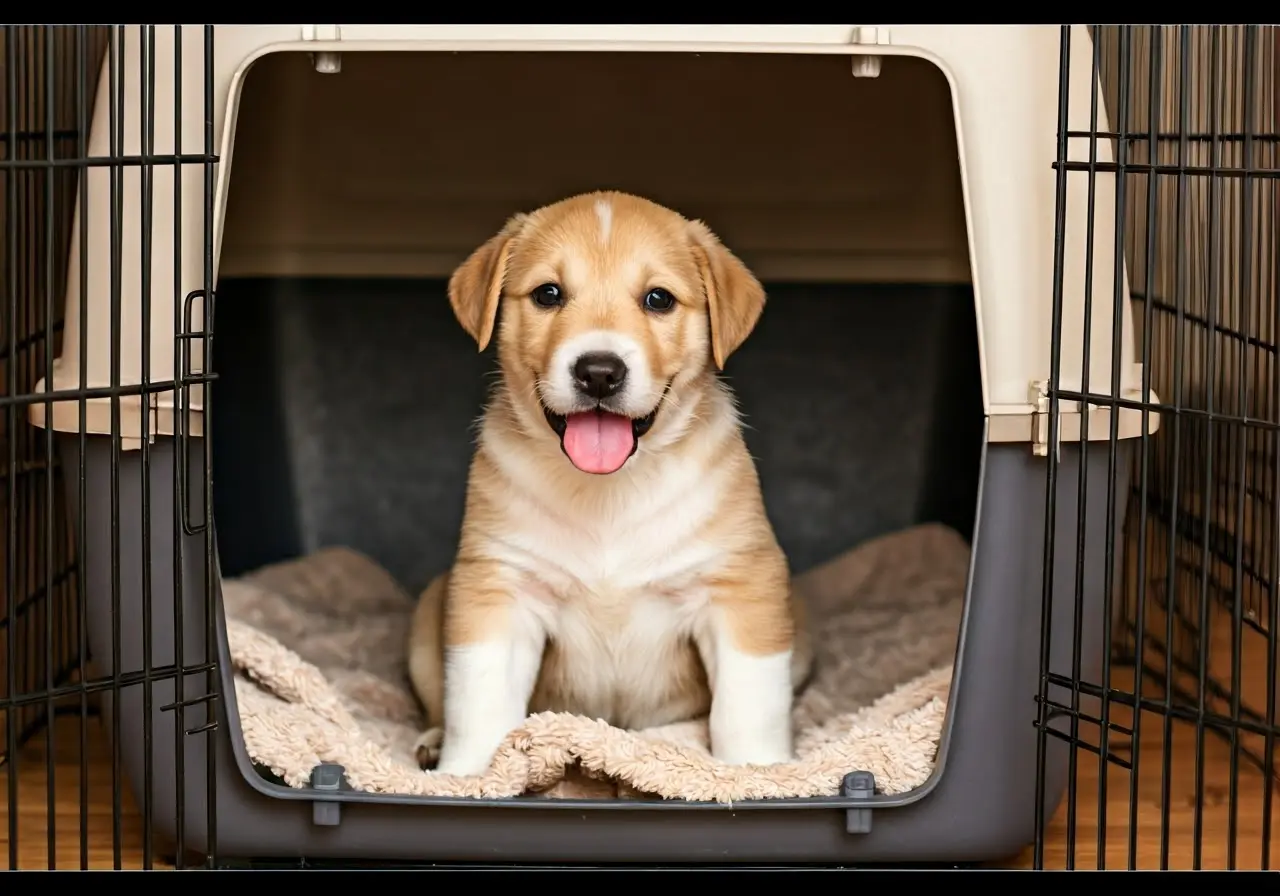Blogs - K9 Obedience LLC: Your Guide to Dog Training and Behavior

Making Crate Training a Positive Experience for Your Puppy
Crate training is often a vital part of integrating a new puppy into your home. For many pet owners, it can seem daunting, but with the right approach, it can become a rewarding and positive experience for both you and your puppy. In this blog, we'll explore how to make crate training an enjoyable process that fosters your puppy's growth and happiness.

Understanding the Benefits of Crate Training
Crate training is about more than just containment; it's about creating a sanctuary for your puppy—a place they can truly call their own. Dogs have an instinctual need for small, enclosed spaces that offer comfort and security, much like the dens they might seek out in the wild. By providing a crate, you're giving your puppy a personal haven where they feel safe and protected, which can significantly reduce anxiety. This approach also aids in housebreaking, as dogs naturally avoid soiling their sleeping area, making crate training an excellent tool for establishing a bathroom routine. Furthermore, a crate provides a secure environment when you can’t directly supervise your puppy, helping prevent destructive behaviors and setting boundaries in a gentle, controlled manner.
Crate training also supports your puppy’s socialization and behavioral development. It helps them adapt to structured interactions with their environment, visitors, and other pets, creating a sense of routine and security that’s vital to their growth. Embracing these benefits can help you approach crate training with positivity, making the experience enjoyable for both you and your puppy.
Choosing the Right Crate
Selecting the right crate is essential for your puppy’s comfort and safety. The crate should be large enough for them to stand, lie down, and turn around easily, but not so spacious that they can create a separate potty area. Wire crates are popular for their high airflow and visibility, and covering them with a blanket can mimic a cozy, den-like atmosphere. Alternatively, plastic crates offer a more enclosed space, which some puppies find comforting, especially those who benefit from a darker, quieter environment.
When choosing a crate, consider your puppy’s specific needs, size, and growth potential. Measure their length from nose to tail and add a few extra inches for growth. This attention to detail will ensure a comfortable space that promotes positive associations, making crate training smoother and more successful.
Introducing the Crate to Your Puppy
First impressions are crucial for puppies, so it’s essential to introduce the crate gradually and positively. Start by leaving the crate door open and allowing your puppy to explore it on their terms. Placing treats, toys, or a comfortable blanket inside can encourage curiosity and create a welcoming environment. Making the crate feel inviting is key—this can be done with soft bedding and a few familiar toys.
Spend time near the crate, encouraging your puppy to go in and out freely. As they grow comfortable, introduce a simple command like “crate” or “bed” in an upbeat tone, and reward them each time they enter. Repeating this cue and associating it with positive experiences will build a strong foundation for future crate training. Gradually begin closing the door for short intervals while you stay nearby, extending the time as your puppy becomes more at ease. Offering treats through the crate door can help ease any initial anxiety about being confined.
Avoiding Common Crate Training Mistakes
It’s easy to make mistakes with crate training, even with the best intentions. One of the most common errors is using the crate as punishment, which can create a negative association. Instead, always approach the crate as a place of comfort and safety. Avoid keeping your puppy in the crate for extended periods, especially in the early stages, as this can lead to frustration or separation anxiety. Be mindful of your puppy’s needs, offering crate time that aligns with their routine and reinforces positive behaviors.
Creating a Comfortable Crate Environment
A cozy crate can make all the difference. Consider adding chew-resistant toys or treat-dispensing puzzles to keep your puppy entertained and relaxed. Soft, comfortable bedding adds to the crate’s appeal, creating a warm space for napping and resting. Puppies are naturally inclined to enjoy a den-like setting, so think about ways to make the crate feel snug and secure. The more comfortable and enjoyable the crate environment, the more likely your puppy will want to retreat there on their own.
Building a Crate Training Routine
Consistency is key to successful crate training. Creating a routine that aligns with your puppy’s natural schedule will make crate interactions positive and predictable. Start by feeding your puppy meals in the crate, reinforcing it as a happy place. Gradually increase the time spent in the crate, especially after play or exercise, when your puppy is naturally ready to rest. Incremental changes can help your puppy adapt at their own pace, setting them up for long-term success.
Each positive session strengthens your puppy’s association with the crate, reinforcing it as a safe and comfortable place. As your puppy becomes familiar with this routine, you’ll find crate training blends seamlessly into their daily life, providing a reliable space for rest, play, and security.
Embrace the Crate: A Safe Haven for Your Puppy
Crate training doesn’t have to be challenging; with the right mindset and approach, it can be a rewarding process that benefits both you and your puppy. By creating positive experiences, being patient, and maintaining consistency, your puppy will come to love their crate as a safe, personal space. Remember, the crate is more than a containment tool—it’s a place of comfort, security, and peace for your puppy. In time, crate training will become an invaluable part of your puppy’s routine, making life smoother and more enjoyable for both of you. Embrace this journey and watch your puppy flourish in their newfound haven.
K9 Obedience LLC, Rochester NY
All Rights Reserved


Facebook